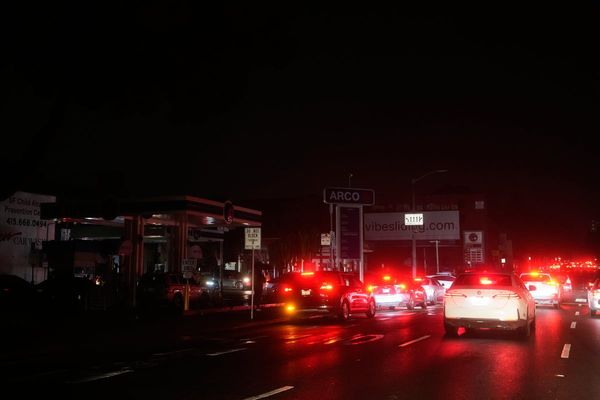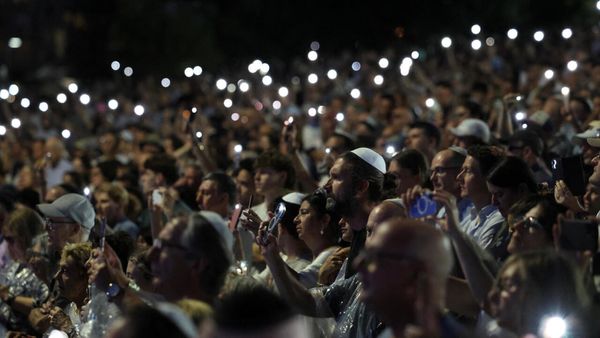
- I put the 2024 Kia EV9 GT-Line's fast-charging capability to the test and came away impressed.
- It recharged from 18% to 80% in 22 minutes when I hooked it up to a 350-kilowatt Electrify America charger.
- The EV9 piles on the miles more quickly than many other EVs thanks to its 800-volt architecture.
“Whoa! It’s charging so fast!” my wife blurted out just a few minutes after we plugged the Kia EV9 into a 350-kilowatt charger. It takes a lot to wow a person who doesn't care much about EVs, but gets a lot of seat time in them anyway by virtue of their spouse’s job. Imagine if a baker was married to someone with a gluten intolerance. It’s kind of like that. “Wow, another type of bread. Fascinating…”
The EV9’s wickedly quick charging performance was enough to impress us both, though.
I’ll give you the key numbers up front, then get into the details of this particular charging experience and what I saw. The bottom line is that the EV9 recharged from 18% to 80% in a speedy 22 minutes, letting us get back on the road much quicker than most rivals will allow. Multiply the 62% gained by 270 miles (the EV9 AWD’s total EPA-estimated range) and you’re left with 167.4 miles. That’s approximately how much driving range the EV9 gained in that quick stop—plenty for at least a couple of hours of highway driving.
My experience tracked nicely with Kia’s own estimate of 10%-80% in 24 minutes. And I think I could’ve seen even faster charging performance for one key reason I’ll explain below.
After plugging into a 350-kW Electrify America unit at a Bank of America in Northern California, the EV9 began sucking in roughly 200 kW of charging power almost immediately. It stayed at or above that level for most of the charging session. The more kilowatts a car is designed to handle, the quicker its battery pack can be recharged. And the EV9—along with fellow Hyundai Motor Group vehicles built on the same platform, like the Kia EV6 and Hyundai Ioniq 5—excels in that regard.
Their big advantage is that they use an 800-volt class architecture, as opposed to the 400-volt-class architectures that most other EVs use. Note that these are simplifications: EV9s like this with the 99.8-kWh battery option have a real nominal voltage of around 552 volts. Smaller-battery HMG cars like the Kia EV6 have voltages closer to 700 volts, and most "400-volt" cars have nominal voltages in the 330-360 range. But even with "only" a 552-volt system, the long-range EV9 is a charging champ.
The miles and state of charge piled on quickly. Within 2.5 minutes, the EV9 displayed 25%. In a hair over 3 minutes, it hit 30%. In around 7 minutes, the EV9 hit 40% while chugging along at 207 kW. It reached 44% in a little over 8 minutes while pulling 209 kW. Then my glorious charging session came to an abrupt halt.

It wasn’t the Kia’s fault. Another EV owner pulled up on the other side of the stall I was using, and tried to stick the charger’s second plug in his own car. The station didn’t like that and killed the power.
I got going again pretty quickly, and once again the power swiftly shot up above 200 kW. It peaked at 216 kW in the ballpark of 55% and descended gradually from there. At around 60%, the EV9 was pulling 201 kW. At 70%, it read 180 kW, still significantly more than most other EVs peak at. Then things dropped more precipitously, to 103 kW at an 80% state of charge.
Add up the total time plugged in and charging—in other words, excluding the time when the session was interrupted—and we get 22 minutes for 18%-80%. But the pause still likely had an impact, since the EV9 didn’t ramp back up to 209 kW the instant it started charging again. I’d bet a smoother do-over would shave off a minute or so.
Despite the hiccup, the experience was impressive. And refreshing. The Cadillac Lyriq I reviewed recently peaks at 190 kW in theory, but I didn’t see close to that in practice. It took a sluggish 40 minutes to recharge from 20%-80%. It’s true that the Lyriq has a larger battery pack and slightly more range than the EV9, so that session added 184 miles. But even when you compare apples to apples, the EV9 wound up beating that time by a long shot.
I kept the EV9 plugged in past 80%, knowing full well that charging speeds would drop significantly, as happens in any EV. After hitting 87% in another 6 minutes, I called it. In sum, the EV9 went from 18% to 87%—a gain of 186.3 EPA-estimated miles—in 28 minutes.
No, that’s not as quick as getting gas. And the EV9's bulk hamstrings its charging capability slightly; it's a big, three-row SUV that by its very nature is going to require extra energy to go a given distance. But I think this is the kind of smooth experience that’s going to convert Americans to EVs—even those stubborn ones who are basically bored by the whole idea.
Contact the author: tim.levin@insideevs.com







